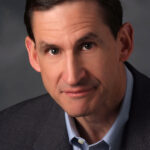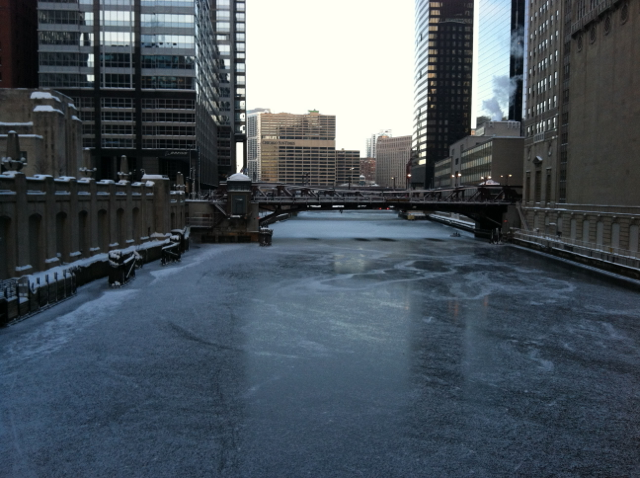Chicago was blasted this week by the coldest weather in 18 years. Below zero temperatures and wind gusts of up to 35 miles per hour produced wind chills of minus 40 F. The deep freeze followed a winter storm that blanketed the area with 6 to 10 inches of snow on Sunday. The extreme cold and snow was a natural retort to Chicago’s policies to fight global warming.
On Sunday and into Monday, Chicago was mostly shut down. More than 1,000 flights were cancelled at O’Hare Airport. Chicago public schools and most suburban schools were closed. Northwest Indiana was hit by over 10 inches of lake-effect snow, where officials of Lake County declared a state of emergency, banning all vehicles from snow-covered roads except emergency vehicles.
Temperatures at O’Hare Airport dropped to -15 F, breaking the old daily record of -14 F set in 1894 and 1988. The brutal temperatures were the coldest since the thermometer reached -19 F in 1996, but well short of the all-time cold record of -27 F set January 20, 1985.
The cold weather stands in sharp contrast to Chicago’s policies to slow global warming. In his Sustainable Chicago 2015 plan, Mayor Rahm Emanual lauds efforts to “. . . reduce pollution, and protect homes and communities from the effects of flooding and climate change.” In 2013, the mayor and city council passed an ordinance requiring businesses to audit and disclose energy usage in buildings of over 50,000 square feet. The city’s sustainability plan calls for citizens to install solar panels, consume renewable energy, and use bicycles, mass transit, and electric cars, rather than gasoline-powered automobiles.
University of Chicago professor David Archer is a strong proponent the theory of man-made warming. In his 2010 book The Climate Crisis, Archer notes that the 2007 Fourth Assessment Report of the Intergovernmental Panel on Climate Change predicted reduced snowfall:
One of the robust findings of the report is that snow cover in most continental areas will dramatically decrease unless warming is stopped. . . . Large areas are expected to become snow free.
But there is no evidence of a snowfall shortage in Chicago. O’Hare Airport has already received 34.7 inches of snow this winter through January 5. This exceeds the average annual snowfall of 30.8 inches, with two months of winter yet to go.
Leading Chicago corporations tout their efforts to fight climate change. Steel company ArcelorMittal and financial firm Northern Trust boast of big reductions in carbon dioxide emissions. Utility Exelon claims emission savings from costly new solar and wind projects, while winning a 2014 rate hike to pass higher costs on to electricity users. Baxter International purchases renewable energy certificates to “offset” greenhouse gas emissions. These efforts may be great for corporate public relations, but are meaningless when it comes to the climate.
The greenhouse effect is a natural effect, and man-made influences are small. Somewhere between 75 and 90 percent of Earth’s greenhouse effect is caused by water vapor and clouds. Ninety-six percent of the remaining portion of the greenhouse effect is due to natural emissions of carbon dioxide and methane from the oceans and biosphere. Human emissions are responsible for only about one percent of Earth’s greenhouse effect. If humankind completely eliminated CO2 emissions, the difference in global temperatures probably could not be detected.
Nevertheless, Chicago organizations continue a futile fight to control the climate. Grove Avenue Elementary School in Barrington, a Chicago suburb, has established an innovative “Green Tuesdays” program. School lights are off each Tuesday to raise student awareness about climate change and the environment.
Keep up the good work, Chicago. With the ample snow and bitter cold, your efforts to fight global warming appear to be working!
Editor’s note: Get the scientific and Inconvenient Truth (to some) about what’s happening to our climate at The Heartland Institute’s Climate Change Reconsidered site. And buy Steve Goreham’s book, The Mad Mad World of Climatism at Heartland’s store.
[First posted at The Washington Times.]





